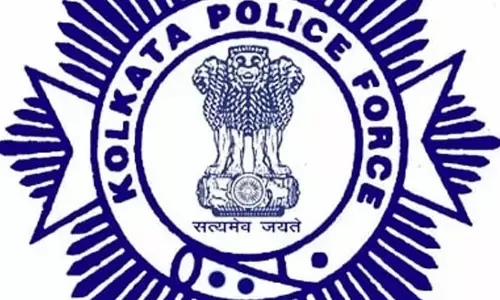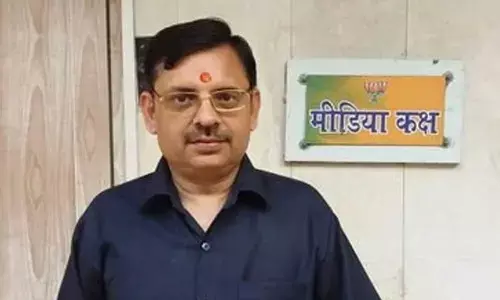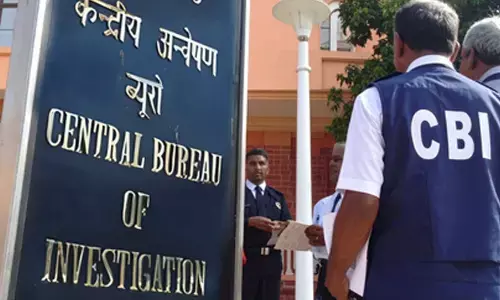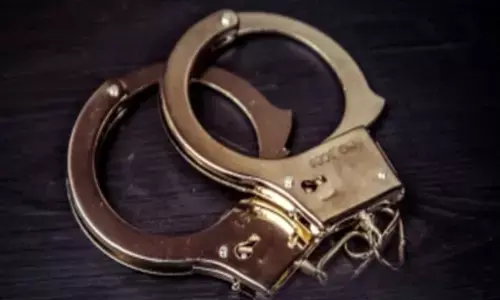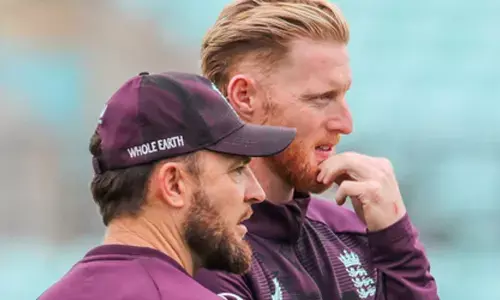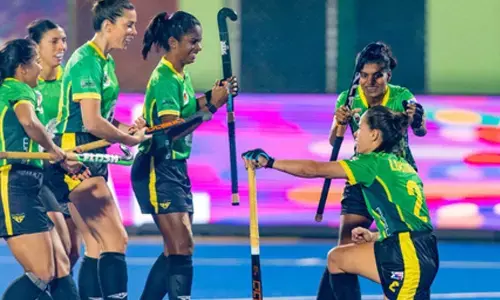How Parliament of India works? - Part-I

The Constitution of India which came into force on 26 January 1950, provides for a bicameral Parliament consisting of the President and the two Houses known as the Council of States (Rajya Sabha) and the House of the People (Lok Sabha).
The Constitution of India which came into force on 26 January 1950, provides for a bicameral Parliament consisting of the President and the two Houses known as the Council of States (Rajya Sabha) and the House of the People (Lok Sabha).
The President
The President of the Republic is elected by an electoral college consisting of the elected members of both Houses of Parliament and the elected members of the Legislative Assemblies (popular Houses) of the States. Though the President of India is a constituent part of Parliament, he does not sit or participate in the discussions in either of the two Houses.
There are certain constitutional functions which he has to perform with respect to Parliament. The President summons and prorogues the two Houses of Parliament from time to time. While the Rajya Sabha is a continuing body, the power to dissolve the Lok Sabha vests in the President. His assent is essential for a Bill passed by both Houses of Parliament.
When the Parliament is not in Session and he is satisfied that circumstances exist which render it necessary for him to take immediate action, the President can promulgate Ordinances having the same force and effect as laws passed by Parliament. The Two Houses of Parliament Composition and Duration
Council of States (Rajya Sabha)
The Rajya Sabha is to consist of not more than 250 members. Of these, 12 are nominated by the President for their special knowledge or practical experience in such matters as literature, science, art and social service.
The remaining seats are allocated to the various States and Union territories, roughly in proportion to their population; each State is, however, represented by at least one member.
The total number of seats in the Rajya Sabha at present is 245, including 12 members nominated by the President.
The representatives of each State in Rajya Sabha are elected by the elected members of the Legislative Assembly of the State in accordance with the system of proportional representation by means of single transferable vote. The representatives of the Union territories are chosen in such manner as Parliament may by law prescribe. The minimum age for membership of the House is 30 years.
The allocation of seats in the Rajya Sabha to be filled by the representatives of the States/Union territories is as follows:
- Andhra Pradesh has 18 seats
- Arunachal Pradesh has 1 seat
- Assam has 7 seats
- Bihar has 16 seats
- Chhattisgarh has 5 seats
- Goa has 1 seat
- Gujarat has 11 seats
- Haryana has 7 seats
- Himachal Pradesh has 5 seats
- Jammu and Kashmir has 4
- Jharkhand has 6 seats
- Karnataka has 12 seats
- Kerala has 9 seats
- Madhya Pradesh has 11 seats
- Maharashtra has 16 seats
- Mizoram has 1 seat
- Manipur has 1 seat
- Meghalaya has 1 seat
- Nagaland has 1 seat
- Orissa has 10 seats
- Punjab has 7 seats
- Rajasthan has 10 seats
- Sikkim has 1 seat
- Tamilnadu has 18 seats
- Tripura has 1 seat
- Uttaranchal has 3 seats
- Uttar Pradesh has 31 seats
- West Bengal has 16 seats
- NCR, Delhi has 1 seat
- Pondicherry has 1 seat
- Nominated by President under article 1 of the Constitution has 12 seats
The Rajya Sabha is not subject to dissolution, but as nearly as possible, one-third of its members retire as soon as may be on the expiration of every second year in accordance with the provisions made in that behalf by Parliament by law. The normal term of office of a member of Rajya Sabha is six years from the date of election or nomination.
House of the People (Lok Sabha)
The Lok Sabha, as the name itself signifies, is composed of representatives of the people chosen by direct election on the basis of adult suffrage. The maximum strength of the House envisaged by the Constitution is 552 – upto 530 members to represent the States, upto 20 members to represent the Union territories and not more than two members of the Anglo-Indian Community to be nominated by the President if, in his opinion, that community is not adequately represented in the House.
The total elective membership of the House is distributed among the States in such a way that the ratio between the number of seats allotted to each State and the population of the State is, so far as practicable, the same for all States. The qualifying age for membership of the Lok Sabha is 25 years. The Lok Sabha at present consists of 545 members.
The allocation of seats to the States and the Union territories is as under:
States
- Andhra Pradesh has 42 seats
- Arunachal Pradesh has 2 seat
- Assam has 14seats
- Bihar has 40 seats
- Chhattisgarh has 11 seats
- Goa has 2 seat
- Gujarat has26 seats
- Haryana has 10 seats
- Himachal Pradesh has 4 seats
- Jammu and Kashmir has 6
- Jharkhand has 14 seats
- Karnataka has 28 seats
- Kerala has 20 seats
- Madhya Pradesh has 29 seats
- Maharashtra has 48 seats
- Mizoram has 2 seat
- Manipur has 2 seat
- Meghalaya has 1 seat
- Nagaland has 1 seat
- Orissa has 21 seats
- Punjab has 13 seats
- Rajasthan has 25 seats
- Sikkim has 1 seat
- Tamilnadu has 39 seats
- Tripura has 2 seat
- Uttaranchal has 5 seats
- Uttar Pradesh has 80 seats
- West Bengal has 42 seats
- NCR, Delhi has 1 seat
- Pondicherry has 1 seat
Union Territories
- Andaman and Nicobar Islands
- Chandigarh
- Dadra and Nagar Haveli
- Daman and Diu
- NCR, Delhi
- Lakshadweep
- Pondicherry
- Anglo-Indians (if nominated by the President under article 331 of the Constitution)
The Lok Sabha, unless sooner dissolved, continues for five years from the date appointed for its first meeting and the expiration of the period of five years operates as dissolution of the House. However, while a Proclamation of Emergency is in operation, this period may be extended by Parliament by law for a period not exceeding one year at a time and not exceeding in any case beyond a period of six months after the Proclamation has ceased to operate.
Following the first General Elections held in the country in 1952, the First Lok Sabha met for the first time on 13 May 1952. The Second Lok Sabha met for the first time on 10 May 1957, the Third Lok Sabha on 16 April 1962, the Fourth Lok Sabha on 16 March 1967, the Fifth Lok Sabha on 19 March 1971, the Sixth Lok Sabha on 25 March 1977, the Seventh Lok Sabha on 21 January 1980, the Eighth Lok Sabha on 15 January 1985, the Ninth Lok Sabha on 18 December 1989, the Tenth Lok Sabha on 9 July 1991, the Eleventh Lok Sabha on 22 May 1996, the Twelfth Lok Sabha on 23 March 1998, the Thirteenth Lok Sabha on 20 October 1999 and Fourteenth Lok Sabha on 2 June, 2004.
Functions
The main function of both the Houses is to make laws. Every Bill has to be passed by both the Houses and assented to by the President before it becomes law. The subjects over which Parliament can legislate are the subjects mentioned under the Union List in the Seventh Schedule of the Constitution of India.
Broadly speaking, Union subjects are those important subjects which for reasons of convenience, efficiency and security are administered on all-lndia basis. The principal Union subjects are defence, foreign affairs, railways, insurance, communications, currency and coinage, banking, income tax, customs, excise duties, atomic energy, census, etc.
Apart from the wide range of subjects allotted to it in the Seventh Schedule of the Constitution, even in normal times Parliament can, under certain circumstances, assume legislative power over a subject falling within the sphere exclusively reserved for the States.
Further, in times of grave emergency when the security of India or any part thereof is threatened by war or external aggression or armed rebellion, and a Proclamation of Emergency is made by the President, Parliament acquires the power to make laws for the whole or any part of the territory of India with respect to any of the matters enumerated in the State List.
Similarly, in the event of the failure of the constitutional machinery in a State, the powers of the Legislature of that State become exercisable by or under the authority of Parliament. This apart, the Constitution also vests in the Parliament the constituent power or the power to initiate amendment of the Constitution.
Besides passing laws, Parliament can by means of resolutions, motions for adjournment, discussions, questions addressed by members to Ministers, system of committees, etc., exercise control over the administration of the country and safeguard people's liberties.
Relative Roles
As between the two Houses, the Lok Sabha has supremacy in financial matters. It is also the House to which the Council of Ministers drawn from both Houses is collectively responsible.
On the other hand, the Rajya Sabha has a special role in enabling Parliament to legislate on a State subject if it is necessary in the national interest. It has a similar power in regard to the creation of an All-India Service common to the Union and the States. In other respects, the Constitution proceeds on a theory of equality of status of the two Houses.
Disagreement between the two Houses on amendments to a Bill may be resolved by both the Houses meeting in a joint sitting where questions are decided by majority vote. However, this provision of joint sitting does not apply to Money Bills and Constitution Amendment Bills.
The Presiding Officers
Each House of Parliament has its own Presiding Officers. In the Lok Sabha, both the Presiding Officers, i.e. the Speaker and the Deputy Speaker are elected from amongst its members. In the Rajya Sabha, the Vice-President of India is the ex officio Chairman.
He is elected by the members of an electoral college consisting of the members of both the Houses of Parliament in accordance with the system of proportional representation by means of a single transferable vote. The Deputy Chairman of the Rajya Sabha is, however, elected by the members of the Rajya Sabha from amongst themselves.
Leader of the House
Each House of Parliament has a Leader. The Prime Minister, who is the Leader of the majority party in the Lok Sabha, functions as the Leader of the House in the Lok Sabha except when he is not a member of the Lok Sabha.
In the case, when the Prime Minister is not a member of the Lok Sabha, he appoints/nominates a Minister, who is a member of the Lok Sabha, to be the leader of the House in the Lok Sabha. The senior-most Minister, who is a member of the Rajya Sabha, is appointed by the Prime Minister as the Leader of the House in the Rajya Sabha.
Leader of the Opposition
Each House of Parliament has a Leader of the Opposition. The Salary and Allowances of Leaders of Opposition in Parliament Act, 1977 defines the term ‘Leader of the Opposition’ as that member of the Rajya Sabha or the Lok Sabha who, for the time being, is the Leader of that House of the Party in Opposition to the Government having the greatest numerical strength and recognized, as such, by the Chairman of the Rajya Sabha or the Speaker of the Lok Sabha.
Types of sessions
Normally, three Sessions of Parliament are held in a year: (i) Budget Session (February-May); (ii) Monsoon Session (July-August); and (iii) Winter Session (November-December)
Budget Session
Budget session, which is conducted from February to May, is considered highly crucial for the matters it deals with. Much importance is attached to this session of the Parliament as government tries to pass as many bills as possible to take forward its reform agenda. The budget session opens with the presentation of the Railway Budget.
While the rail budget is presented sometime in the third week of February, the General Budget is presented on the last working day of February. The MPs get an opportunity to discuss budgetary provisions and proposals pertaining to taxation.
It is often seen that the budget session is split into two periods with a gap of one month in between. The standing committees related to various ministries utilise the intervening period to discuss and consider the Demands for Grants made by the ministries. The timeframe between the prorogation of the Parliament and its reassembly is known as recess.
Monsoon Session
After a brief hiatus of around two months, both the Houses of the Parliament resume business in July and continue till September. Unlike the preceding session, the monsoon session is dedicated largely to discussions on matters of public interest. It is during the monsoon session that the members of the Parliament, including the ministers, can bring forward the legislative proposals in the form of a Bill.
The government can move a resolution or a motion to get approval or opinion of the House on policy-related issues and matters of grave concern. Similarly, the MPs can also move a resolution in order to draw the attention of the House on specific problems and initiate discussions on matters of urgent public importance.
Winter Session
It is the shortest session that spans over a period of one month generally between mid-November and mid-December. It takes up the issues that could not be deliberated upon and makes up for the lack of legislative business during the second session of the Parliament.
The MPs not only debate on administrative policies on the floors of the Parliament, but also make sure that the government gets the drift and becomes aware of its lapses.
All the three sessions of the Parliament are uniform in their purpose and the functions they are expected to perform. For example, the proposal for amending a certain Act within the Constitution of India can be initiated in any of the three sessions and either House of the Parliament.









